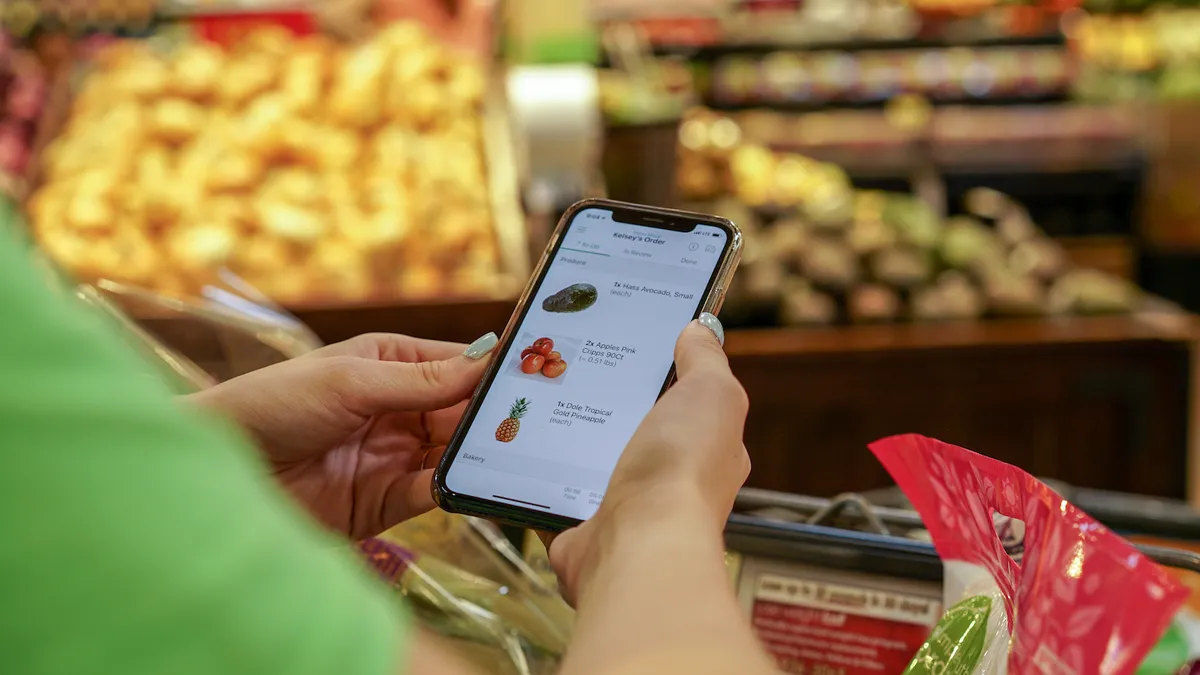Dive Brief:
-
Online grocery sales jumped to a record high in April, as shoppers spent $5.3 billion on orders for delivery and pickup, according to data released Tuesday by Brick Meets Click and Symphony RetailAI. The total represents a 37% increase over March, when sales hit $4 billion.
-
The total number of online grocery orders placed rose by a third in April, to 62.5 million, while the average order size ticked up 3%, to $85, the survey of 1,651 adults, which was conducted between April 22 and 25, found. Forty million people shopped for groceries online in April, up slightly, and shoppers placed an average of 1.6 orders, a 32% increase.
-
In a further indication of rising interest among consumers in avoiding trips to the supermarket, 26% of surveyed households that did not report buying groceries online over the last 30 days said they were very or extremely likely to place an online grocery order during the next three months.
Dive Insight:
Grocers have rolled out a variety of measures to prevent the novel coronavirus from spreading in their stores, but the perception that supermarkets are dangerous places to visit remains high. Forty-seven percent of households that participated in the research performed by Brick Meets Click and Symphony RetailAI said their decisions about how to buy groceries are driven by a “high level” of concern that they will contract the virus.
The online surge comes as supermarkets are scrambling to beef up their e-commerce capabilities. Companies like Kroger and Walmart have hired hundreds of workers to pick and pack orders, and are opening up more pickup and delivery slots each day. Grocers are also streamlining their supply chains with a particular focus on essential items. Some retailers, most notably Amazon, have placed shoppers on waiting lists for service.
The surge has translated into a booming business for companies like Instacart that have shoppers pick up groceries for customers and deliver them to their homes. Instacart announced last week that it plans to add 250,000 contractors to its rolls during the next two months, and has seen sales rise 500% year-over-year. The company is expected to turn a profit for the first time this month, according to The Information.
Questions remain about whether people will continue to turn to their smartphones and computers to purchase groceries in such large numbers once the pandemic subsides, however. A key challenge for the industry is that people who are trying grocery e-commerce for the first time are encountering obstacles like long waits for delivery slots and problems finding products they want to buy.
Business Insider Intelligence, another research firm, projects that the percentage of U.S. consumers that have used online grocery services will hit 43% by the end of June and rise to 49% by the end of the year.
Only 50% of households that participated in the survey said they will likely use the same provider the next time they purchase groceries online, up just 3% from March. “The ongoing shifts in spending mean that retailers will need to work carefully in applying historical sales data to forecast future sales if they are going to be accurately aligned with shoppers,” Kevin Sterneckert, chief marketing officer of Symphony RetailAI, said in a statement. “Today’s retail winners will be those that best understand their customers and can meet and exceed their expectations the fastest.”













